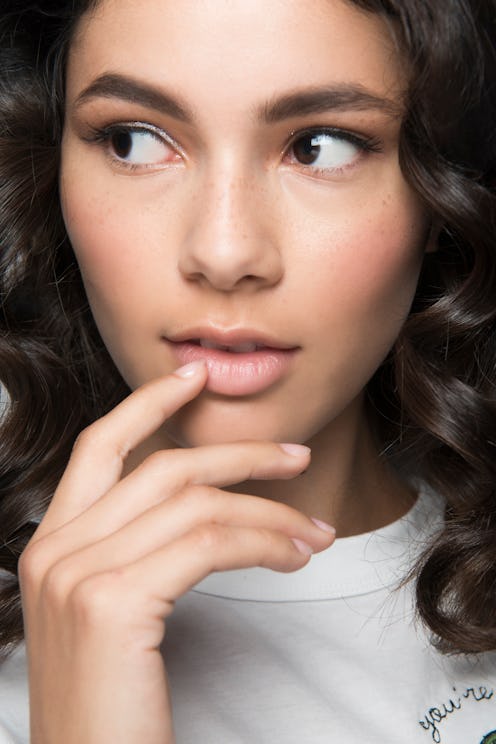(Beauty)
These Are The 5 Beauty Ingredients To Stay Away From

You wouldn’t intentionally eat poison, would you? So why choose to put toxic chemicals on your skin? Yet navigating beauty-product labels can be overwhelming, so we’re breaking down the five no-good ingredients most commonly found in skincare and makeup. Say bye-bye to these ASAP, and your body will thank you, now and in the long run.
Healthy From The Outside In
Parabens are preservatives that prevent the growth of bacteria, mold and yeast in beauty products—and they've been associated with increased risk of breast cancer and identified in biopsy samples from breast tumors. Still extremely common, they can be found in makeup, body washes, deodorants, shampoos and facial cleansers.
The next time you peek at your ingredient label, look out for letters FD&C or D&C (F represents food, and D&C drug and cosmetics) followed by a color and number. These are artificial colors—synthetics derived from petroleum or coal tar (seriously). Known to be skin irritants, synthetic colors are also suspected to be carcinogens (cancer-causers).
You know that fresh smell of your favorite shampoo or moisturizer? Unless it's derived from all-natural essential oils, chances are it's a blend of synthetic fragrances. Many scented beauty products have been associated with allergies, dermatitis, respiratory issues and negative potential effects on your organs. Look for fragrance or parfum on the ingredient list of perfume, cologne, conditioner, shampoo, body wash and moisturizers.
Commonly used to soften plastic, phthalates are dangerous chemicals because of their effects on the body and how easily they fly under the radar. Those commonly found in beauty products are dibutyl phthalate (nail polish), diethyl phthalate (perfumes and lotions) and dimethyl phthalate (hair spray). These have been linked to an increased risk of breast cancer, early breast development in young girls and birth defects in males and females. The scariest part is their presence is not always disclosed—they may be incorporated into fragrance on a label.
The most common of all, these are present in more than 90% of personal care products and can cause skin and eye irritation. If it foams (shampoo, body wash, face cleanser and acne treatment), it probably contains at least one SLS.